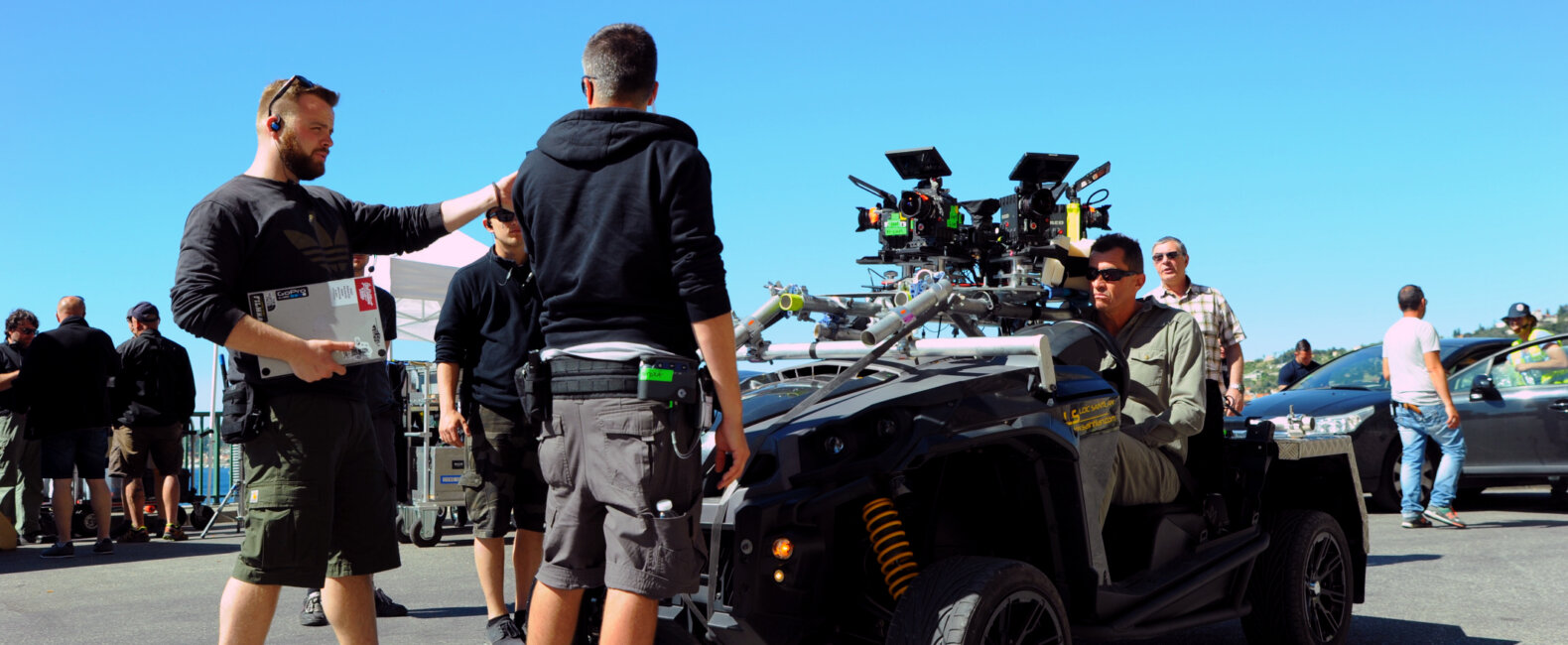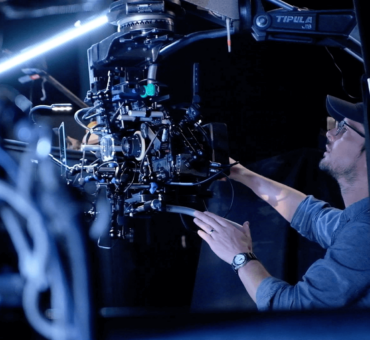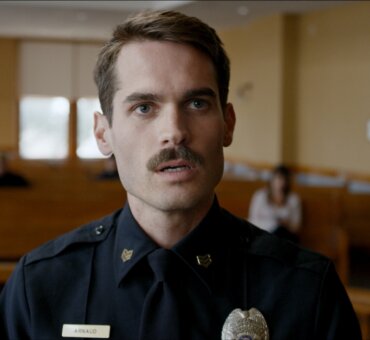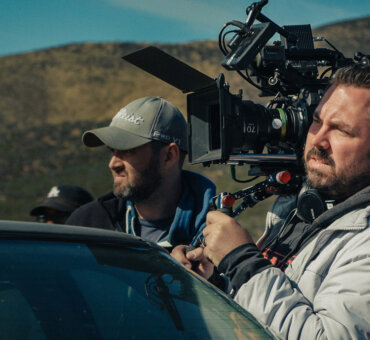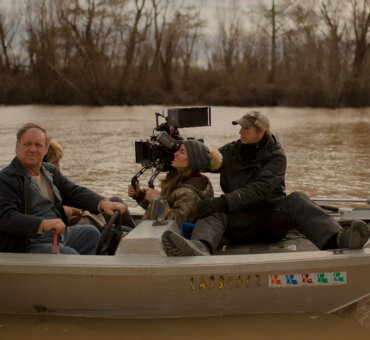Since Steve McQueen’s iconic 10-minute car chase scene in the 1968 film Bullitt (widely considered to be the first proper car chase in movie history), things have gotten really out of hand — in the best possible way. It now seems well within the realm of possibility to jump a muscle car onto a moving yacht. Or outrun a helicopter on a crotch rocket. And why not? There’s a reason it’s called “movie magic.” And like any good magic trick, what appears spontaneous and effortless to the audience is almost always the result of meticulous planning and masterful execution.
“The best advice I can give is that you need to be highly organized. … And try to think outside the car box,” Shane Hurlbut, ASC, told us. A veteran of car chase cinematography, this is the guy who shot a little film called Need for Speed. “Pre-production planning is absolutely paramount.” This proved truer than ever in Shane’s latest film, The Adventurers, which included a 12-day car chase shoot in Cannes — sans actors. “It was my job to say, ‘Okay, this is how we’re going to do this.’”
Here’s Shane Hurlbut, ASC, on the art of the car chase.
Filmsupply: How many car chases have you shot over the course of your career?
Shane Hurlbut: Well, Need for Speed alone had eight or nine. There were little chases here and there throughout the film that required their own sort of rule breaking. Terminator Salvation had three or four great car chases. I guess the answer is a lot.
Is there a difference between the ones you’ve shot in the past and the one in The Adventurers? Twelve days of shooting for one sequence — and without the actors — sounds pretty intense.
Yes, that was a challenging situation. The actors were available in June, and our only window to shoot at Cannes was at the end of May — after the film festival. Stephen Fung, the director, really wanted this action sequence in Cannes. He wanted it to be big and grand and glamorous, all the things that come with shooting in the South of France. The color tone there is unlike anywhere you’ve ever experienced. The light has such a warmth to it, and the sky and ocean are so blue.
Anyway, it was my job to say, “Okay, this is how we’re going to do this.” We were going to have to plate every scene. So we had to create a car that would shoot a series of interactive plates that we could then infuse into the action. That way, when we shot the actors on a blue screen stage in Prague, it would feel realistic. It’s very difficult to pull off something like that, especially when you consider the restrictions of scheduling and location availability. We were very limited in terms of where we could be, how long we could be there, how much road we could close down, how much we could lock up. Some shots required 75 production assistants to lock off hotel entries, exits, shops, parking garages… you get the point. Pulling that off within budget and with the number of days we had was a feat.
How does that approach compare with the work you did on Need for Speed?
The car chases on Need for Speed are all practical. So you’re literally watching cars flip over and race high speed through the streets of Macon, Georgia. The actors all went to driving school, so they were really in the cars — these specially designed pod cars that infused them into the high-speed action. But when you have a scenario where you have only stunt men, like in The Adventurers, you have to put neutral density on all the windows so you can’t see extreme detail. Then we shoot it in a way that ties the real actors into the scene, by shooting over the shoulders of the stunt men. It’s pretty challenging to make it all work. We shot the plates with seven cameras and in 360 degrees, basically like a VR rig, with a number of RED DRAGONs. Then I had a 4K Kodak 180-degree Action Cam that shot straight up the center of the plate car array. That way I was able to put reflections on windshields and cars and sheet metal, so it felt like they were driving down the streets of Cannes.If you have a large budget, you can take the plates and put them onto LED screens or rear projection, so the actors are integrated with the lighting that comes from the plates that you shot. It floods the interiors with all the correct tones and mood. You’re basically creating a 360-degree shot with interactive light generated through projection. That’s how high-speed chases are done in The Fast and the Furious movies and in the Captain America movies. Whatever the budget, it is the lighting effects that really make it interesting. If the actors aren’t able to be present because of scheduling or the availability of high-speed insert cars, a rough edit of the chase sequence is necessary to educate the actors on body language and eye lines. In our movie, we worked with the editor to cut together the action sequence, so we’d know what the actors were doing. Were they turning left? Hitting the brakes? All of this had to be worked out way ahead of time. And then we had to match the light in all those scenes. Where was the sun? Was it backlit? Was it side lit? Was it going through palm trees?
We worked with the gaffer and the key grip to create what we called “da Vinci flying machines.” They kind of looked like the diagrams in Leonardo da Vinci’s notebooks. They would spin in front of the sun to create palm tree shadows when we were driving down La Croisette in Cannes. Then, when we were in an alley, we’d flag the sun off. We had these huge balloons — 40 feet long and 12 feet wide — that would surround the car, and the color tone would go cold, just like the blue sky light in Cannes. We did all of this to create a kind of interactive play. The actors would sit in the car, we’d put it on a motion base, and it would look like they were really driving. The challenge was to re-create the intensity of the exterior action on a blue screen sound stage with black walls, black ceilings, and black floors.
How did you guys choreograph all those movements? Did you have the actual edit playing at the same time, or did you time it out?
We got a big 120-inch television that we put in front of the actors — in front of the windshield — and we played out the sequence. The chase was broken up into a number of different parts, and each part had a video associated with it. We played the plate that we shot in the front. And if the actress had to look over and see some car on her left, we’d position the video screen over there and use the plate that showed the point of view outside the driver’s window. Same thing for the other side. We couldn’t do a beautiful 180-degree view so they could be totally immersed. So we broke it down, showed them what was happening. And Stephen, the director, talked them through the action.
How did you handle the logistics for that? It must have been crazy.
The only way we could pull it off was to refer to what I call “the bible.” The bible is this document that my assistant and I put together with specific notes that made every day’s shoot seamless. Everything was perfectly detailed and scheduled, so we had a plan to move forward. The entire shoot was kind of a chess game, with me trying to figure out how many cameras I could put in each setup to maximize our time. The only way that was possible was with the bible. Once we had all the restrictions from Cannes and all of our time frames — where we could be, when we could be, what location we shot on specific days — it took us three weeks to put the thing together. When you consider all the different cameras and where they were placed on the street and what each setup was — oh my God, that document was really as thick as a Bible!
How many pages was this thing?
It was 128 pages. On Need for Speed I think the end race was 280-odd pages — just for the one sequence.
Is there ever any room for improvisation, or is the shoot pretty much by the book?
There’s not a lot of room for improvisation. We have to lock in to all of the plate shots and deal with production restrictions and stick with what the stunt men have rehearsed. Even with Need for Speed, which didn’t have any plates, the stunt men had worked out the big flip jumps months in advance. So you pretty much stick to the book.
So, let’s talk about your basic approach to planning any car chase. Do you have an entry point into these sequences?
Okay, big takeaway here: the first thing you’ve got to do with any car chase is not plan action to the script. You have to go to the locations and use the locations to plan out the action beats. Because when you try to fit the script’s action beats to the locations, they end up fighting each other.
What’s in the script was developed by a writer who probably didn’t consider the logistics for shooting the scene. So what we always do first is establish Point A and Point B. How is the character going to get there? How does the location limit us? Then we look at what kinds of action beats are written in the script. Once those are accomplished, how can we make it even more exciting? The only way you can do that is by physically going to the location and seeing what it offers.
A perfect example was on the shoot for Need for Speed. We sent a production designer and location scout to find our “grasshopper.” I don’t know if you’ve seen the movie, but the way the characters get out of Detroit is to jump across six lanes of traffic by using an off-ramp hill to literally catapult themselves into the air. Then they land in a parking lot and continue down the road. Well, they looked for this jump location for weeks but didn’t find the perfect one. When the director, stunt coordinator, another production designer, and I finally joined them, we drove all around Detroit. We found a tunnel that was going to be great and the perfect spot for a 360, but no grasshopper. Defeated, we were heading back to the hotel when I noticed an on-ramp to the freeway. If we went across to the right, we could shoot over six lanes of off-ramp traffic. We all thought, That looks cool. We hooked a big U-turn, and then we realized the cars would land in a church parking lot. And there are all these trees around, with a big one right in the middle of the best landing spot. So we asked: “Can we get the city to uproot these trees and replant them after the shoot?” And the city approved it! They ripped out the trees and boom! We got our grasshopper.
What’s the next part of your planning?
Once you have the location and you’ve written out your action beats based on the location, then it’s time to draw up storyboards. The director and you shot list the whole thing out — “I want this drive-over cam” or “I want this helicopter shot” — and then you hand it to the storyboard artist who goes hog-wild illustrating. Once the storyboards are revised several times — with director approval — the storyboard artist and I lock boards and break them down from a shot description to what devices are needed to deliver the shot: what lens, what camera, etc. Once you have the entire action sequence vetted, it’s just a matter of establishing a schedule and following your bible to a T.
Are there any last tips or important pieces of advice you’d give a cinematographer about shooting a car chase?
The best advice I can give is that you need to be highly organized. Pre-production planning is absolutely paramount. And try to think outside the car box. If you don’t have a solid game plan, you might get the shots; but you’re definitely not going to get them with the efficiency that’s needed. A good pre-production process allows you to make the most of your budget. We pulled off Need for Speed with $52 million. The Fast and the Furious movies have a budget of $150 million. We got large-scale action sequences on a much smaller budget. Being organized was our only option.
Take the big race in Need for Speed. We shot that in four days. That’s kind of impossible. But because we put together our bible and prepped everything in advance, we were able to pull it off. My biggest advice to cinematographers is to put together a playbook — your bible — with a plan, and consider shooting with many cameras. I’m not just talking about the big action sequences where you flip over a car. I’m talking about the car-to-car and actor-to-actor interactions, the over-the-shoulder shots that embed an audience, immersing them in the action. To pull that off, you need multiple cameras shooting at the same time.
You’re systematically looking at the storyboards and seeing how many cameras you can incorporate in order to make everything feel seamless. The big stunts are their own thing. With meticulous planning, they may have multiple cameras, mounted GoPros, and crash cams. It’s understanding how everything else — the actors and the car interactions — comes together that’s really important. Organize things, be judicious with camera placement, and pick your lenses so everything is integrated in the shortest amount of time possible. If you can do that, then you can put a lot more up on the screen.
